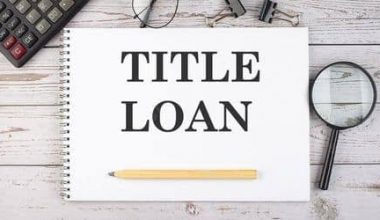The FHA loan is the most well-known and oldest low-down-payment mortgage for first-time home buyers. It’s the go-to choice for purchasers who don’t meet the other low or no down payment mortgage requirements. Because banks were afraid to offer home loans, yet housing was critical to the recovery, the government established the FHA as a bank insurance agency. If a homeowner and their mortgage satisfied the government’s requirements, the FHA agreed to refund the bank if the homeowner missed payments. Here’s all you need to know about FHA loan requirements for a first-time home buyer.
What is an FHA loan?
FHA loans are distinguished by three characteristics:
- A 3.5 percent down payment is required.
- All credit ratings are acceptable and permitted.
- Loan sizes are limited by the FHA’s insurance policy.
Furthermore, FHA loans are assumable, which means that if a buyer sells their house, the new owner can continue to use the same FHA mortgage at the same interest rate.
When mortgage rates rise, assumable loans might help you sell for top dollar.
What are the First-Time Home Buyer FHA Loan Requirements?
FHA-backed mortgages use the same mortgage contract as other home loans in the United States. Buyers borrow money, agree to monthly payments, and repay the loan in 15 or 30 years.
There is no penalty for selling your property before the loan is paid off, and as the homeowner, buyers have the option to pay off their debt sooner or refinance it.
According to mortgage software provider ICE, the average FHA house buyer puts down less than 5%.
What is the FHA Loan Down Payment Requirement?
FHA loans require purchasers to put down at least 3.5 percent of the purchase price, or $3,500 for every $100,000. There is no maximum amount for a down payment.
What is the FHA Loan Credit Score Requirement?
Most FHA loans demand a credit score of 580 or better. However, borrowers with scores as low as 500 may be eligible with a down payment of 10% or more.
What Does the FHA Mortgage Insurance Premium (MIP) Cost?
The FHA announced a new mortgage insurance premium schedule for all FHA-backed mortgages on February 22, 2023.
Beginning March 20, 2023, the revised FHA MIP schedule applies to mortgages with FHA case numbers. When a buyer applies for an FHA mortgage, an FHA case number is assigned to them.
Mortgage insurance is paid in two installments by FHA home buyers.
UFMIP (Upfront Mortgage Insurance Premium)
MIP (Annual Mortgage Insurance Premium)
The new FHA mortgage insurance schedule for 2023 charges 1.75 percent of the loan amount upfront, with annual MIP rates varying by down payment, loan size, and loan length.
The FHA automatically adds upfront MIP to a buyer’s loan balance as a built-in fee. Then, in the buyer’s monthly mortgage statement, it collects 1/12 of the annual mortgage insurance.
30-Year FHA mortgage with a 3.5 percent down payment
- MIP of 0.55 percent every year, or $550 for every $100,000 borrowed
- Add 0.20 percentage points for loan amounts greater than $726,200.
- Paid on a monthly basis until the debt is paid off or refinanced.
A 30-Year FHA mortgage with a 5 percent down payment
- MIP of 0.5% per year, or $500 per $100,000 borrowed
- Add 0.20 percentage points for loan amounts greater than $726,200.
- Paid on a monthly basis until the debt is paid off or refinanced.
30-Year FHA mortgage with a 10 percent down payment
- MIP of 0.5% per year, or $500 per $100,000 borrowed
- Add 0.20 percentage points for loan amounts greater than $726,200.
- Paid monthly until 132 payments have been made or the loan has been refinanced.
15-Year FHA mortgage with 10 percent down payment or less
- MIP of 0.40 percent every year, or $400 for every $100,000 borrowed
- Add 0.25 percentage points for loan amounts greater than $726,200.
- Paid on a monthly basis until the debt is paid off or refinanced.
15-Year FHA mortgage with more than 10 percent down payment
- MIP of 0.15 percent every year, or $150 for every $100,000 borrowed
- Add 0.25 percentage points for loan amounts greater than $726,200.
- Paid monthly until 132 payments have been made or the loan has been refinanced.
FHA mortgage for 15 years with a down payment of more than 22%
- MIP of 0.15 percent every year, or $150 for every $100,000 borrowed
- No modification is required for loans more than $726,200.
- Paid monthly until 132 payments have been made or the loan has been refinanced.
FHA mortgage insurance costs fluctuate for FHA refinances, including the FHA Streamline Refinance, as well as loans for Hawaiian Home Lands and Indian Lands.
Who Is Eligible for an FHA Loan?
A First-time home buyer and the home purchased must meet the FHA’s eligibility requirements, which are summarized below, in order to qualify for an FHA-insured loan.
- A down payment of at least 3.5 percent is required for home buyers.
- Buyers must have a proven source of income and employment.
- Home buyers may not be in arrears on federal taxes or school debts.
- Buyers may not own another FHA-financed property.
- Homes must be lead-free and meet other livability standards.
For its mortgage program, the FHA does not impose a minimum credit score and creates specific accommodations for buyers with no credit history or credit score. The FHA requires lenders to go beyond a person’s credit score in order to determine the “bigger picture.”
There are no special eligibility requirements for the FHA mortgage program. Home buyers can dwell in any residential property in any city in the United States.
Buyers do not require social security numbers. Non-permanent resident aliens, as well as employees of the World Bank and foreign embassies, are eligible for FHA mortgages.
FHA loan standards are less stringent than those of other government-backed mortgage programs, making them ideal for first-time purchasers. If you’ve been turned down for a conventional or VA loan, FHA financing may be able to help you quit renting and start owning.
What Are the FHA Loan Limits?
The FHA only covers certain types of mortgages. Its upper limits differ depending on area. The limits are frequently referred to as FHA loan limits. Annually, the Federal Housing Finance Agency (FHFA) increases lending limitations.
You can use the FHA’s loan limit table to determine the maximum permitted loan size in your county.
The national FHA loan ceiling for 2022 is $420,680. FHA loan limitations are raised to $970,800 in places where the cost of living is greater than average, such as San Francisco or Brooklyn.
The FHA loan maximum will rise to $472,030 and $1,089,300 in 2023.
FHA loan restrictions for two- and multi-family homes have increased.
How Can First-Time Home Buyers Obtain an FHA Loan?
FHA loans are available to first-time home buyers who apply online at a lender’s website or in person at a bank branch.
Every year, about 600,000 first-time buyers are accepted by the FHA. Complete applications necessitate a credit check as well as confirmation of income and employment.
Most mortgage lenders are FHA-approved and offer a full range of FHA-backed products, such as the 30-year mortgage and the FHA 203k home building loan.
#1. Choose a Mortgage Company
To make an FHA-backed loan, mortgage lenders must be FHA-licensed.
On its website, the FHA has a searchable list of FHA-approved lenders as well as a list of lenders whose licenses have been revoked.
FHA-approved lenders can be found on the government website or by searching for approved FHA lenders online. Lenders who publish FHA mortgage rates in a rate table are required by law to be FHA-approved.
For comparison purposes, buyers should choose at least two FHA-approved lenders.
#2. Apply for an FHA-Insured Mortgage
The FHA loan application is similar to other types of mortgage applications.
Buyers can expect their lenders to verify their income, assets, and employment. To guarantee FHA eligibility, they should submit an application to have their credit ratings validated.
Based on their application, buyers can obtain an FHA pre-approval.
Binding FHA mortgage approvals, on the other hand, require the buyer to acquire a home and commission an FHA-certified home inspection.
FHA home inspections ensure that a property meets the following criteria:
- Free from lead paint
- HVAC, plumbing, and electric compliant
- Human-friendly and secure
Because FHA applications are manually examined, they may take longer to approve than other types of mortgage loans.
#3. Compare FHA Loan Estimates from at Least Two Lenders
It takes time to apply for an FHA mortgage. Applying for two FHA mortgages takes extra time – but it’s time well spent!
According to Freddie Mac research, obtaining two or more mortgage estimates saves a home buyer $1,500 over the life of their loan. Some homebuyers save more than others.
FHA loan interest rates fluctuate regularly, so don’t wait too long between comparisons. Examine the loan fees, interest rates, and processing fees. Even tiny amounts of savings compound up over time.
Also, notify your lender whether you are qualified for downpayment help or cash grants for a down payment.
2023 FHA Loan Requirements
FHA loan standards include a minimum credit score of 500 as well as monthly debt load limits.
Federal Housing Administration-backed mortgages have different restrictions than other types of home loans. If you have less-than-perfect credit or previous bankruptcy, an FHA loan may be easier to qualify for than a conventional loan.
An FHA loan does not need you to be a first-time home buyer. FHA loans, on the other hand, are popular among first-time homebuyers because they combine modest down payment criteria with more forgiving credit scores and existing debt requirements. Some conventional mortgages offer down payments of as little as 3%, but you’ll almost certainly need to fulfill tighter credit score and debt-to-income ratio requirements than the FHA’s minimums.
FHA loans are not provided by the government. The FHA insures them on behalf of lenders including banks and credit unions. While the government establishes basic requirements for FHA borrowers, each lender is free to establish their own restrictions, such as needing a higher credit score.
This is one of the reasons why it’s a good idea to shop around and compare FHA lenders. They may have various criteria, and you can compare lenders’ interest rates and costs.
Here’s an overview of the most important FHA loan requirements.
FHA credit score requirement: 500
Borrowers can qualify for FHA loans with lower credit scores than most conventional loans, which is why they are popular among first-time home purchasers. Borrowers with credit ratings as low as 500 can be considered for FHA home loans.
While the FHA establishes recommendations for credit score minimums, FHA lenders frequently reduce their risk by requiring higher credit minimums.
Even a lender who strictly adheres to FHA requirements will offer better terms (such as a smaller down payment and more leeway for existing debt) if you have a higher credit score. A higher credit score should also assist you in obtaining a lower FHA mortgage rate.
FHA requires a 3.5% down payment.
The minimal down payment on an FHA loan is determined by your credit score. The minimum down payment is 3.5% if your credit score is 580 or above.
If your credit score is between 500 and 579, the minimum down payment is 10%. The FHA requirements refer to this as the minimum needed investment or MRI.
FHA debt-to-income ratio must be less than 50%.
Lenders consider your debt-to-income ratio regardless of the sort of mortgage you obtain. To find out where you stand, use a debt-to-income ratio calculator. A lower DTI is preferred by lenders since it indicates that you are more likely to be able to afford a loan and make timely payments.
The FHA’s DTI guidelines change based on your credit score. They also take into account other factors of your financial situation, such as how much cash you have on hand.
The FHA considers two ratios:
PTI, also known as the front-end debt ratio, is the ratio of your planned monthly mortgage payments to your monthly income. The FHA refers to this as your Total Mortgage Payment to Effective Income Ratio, or PTI for payment-to-income. This may also be referred to as your front-end debt ratio.
DTI: The debt-to-income ratio (DTI) calculates the percentage of your pretax income spent on monthly debt payments. This includes your mortgage or rent, credit cards, student loans, and any other debts you may have.
If your credit score is at least 580 and you meet further conditions, your PTI can be as high as 40% and your DTI can be as high as 50%. Some lenders may make FHA loans to customers with DTIs above 50%, but the options are limited.
Income restrictions for FHA loans
There is no minimum or maximum wage required to qualify for or be denied an FHA-insured mortgage. You must, however:
Show a two-year income history via work verification or proof of school or military participation.
Have a credit history, which is typically represented by a traditional credit score. If you don’t have a credit score, you’ll need to show a track record of timely payment of at least three types of payments, such as rent or utilities.
There must be no delinquent federal debt or judgments, whether tax-related or otherwise, or debt associated with previous FHA-insured mortgages.
Consider monetary gifts to assist with the down payment. Money from a friend or family member, a charity, your workplace or union, or a government body might all be considered. These contributions must be documented in writing, signed and dated by the donor.
FHA loan limitations range from $472,030 (base) to $1,089,300 (maximum).
FHA loan limits vary by county, thus the property must fulfill them. In 2023, single-family homes in low-cost locations can cost up to $472,030, while high-cost areas can cost up to $1,089,300.
Documentation requirements for FHA
When applying for an FHA home loan, you will need to provide the following documentation:
- A government-issued ID, such as a driver’s license or passport, is required.
- A copy of your Social Security card.
- Original pay stubs, W-2 forms, or acceptable tax returns dating back two years.
- Signed and dated documents detailing the source and amount of any donation cash and specifically stating that you are not required to repay the funds.
An FHA-approved lender will walk you through the details of any additional documentation you may be required to furnish.
What Will Disqualify You For An FHA Loan?
A high debt-to-income ratio, bad credit, or a lack of finances to afford the needed down payment, monthly mortgage payments, or closing costs are the three basic issues that can prohibit you from receiving an FHA loan.
What is Considered First-Time Home Buyer in NY?
SONYMA considers you a first-time home buyer if you have not purchased a principal house in the previous three years.
What Is Biden’s $25,000 Downpayment Toward Equity Act?
The Downpayment Toward Equity Act gives eligible first-time home purchasers with up to $25,000 in cash for a down payment, mortgage closing costs, interest rate reductions through discount points, and other home purchase expenses.
Is It Hard To Get An FHA Loan?
A conventional mortgage is more difficult to obtain than an FHA loan.
To Summarize
Since 1933, FHA 203b loans have made homeownership more affordable and accessible to Americans in all 50 states – it is the first low-down-payment loan.
Start a pre-approval with Homebuyer and let a mortgage guide help you put your best foot forward to see if an FHA mortgage is right for you.
Related Articles
- What Is Mortgage Insurance Premium? How It Works
- What Is Mortgage Insurance and When Do You Need It?
- FHA LOANS: Definition, Requirements, Credit Score, and Best Loans
- How To Buy A House With Bad Credit: Detailed Guide In 2023






